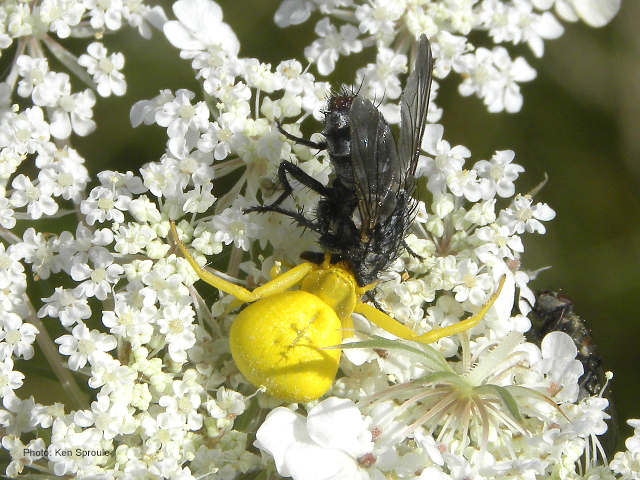There was a time when a garden shed was simply the place you parked the lawn mower, garden equipment and other tools. These days garden sheds are so much more. They're workspaces, creative studios and retreats for outdoor entertaining.
Whatever end use you may have in mind, here is some inspiration to help you to get you started in creating your ideal space.
Classic Garden Sheds:
It's a little hard to see, but the weathervane on this classic garden shed is a grasshopper. How perfect!
So what makes a great shed? It's all in the planing and the details. In my first example, everything has been considered: the building's design, the colors on the exterior and the plantings that surround it.
Notes on Design Choices:
• Before choosing a style for your shed, consider the design of your home. The style doesn't have to match, but it should be complimentary.
• It's also a good idea to think of the color of your home when choosing paint colors for your shed. Either repeat the trim and main colors of your home or choose a color scheme that coordinates.
• Take function into account. Is your shed simply a place where you plan to store things or is this a space that will have other uses?
• Consider the seasons of use. If you plan to use the shed year round, you'll need insulation and a way to heat the interior.
• A shed can be a pretty dark place if there is no electric lighting, so incorporate enough windows to allow natural light make the space bright and airy.
• Think about how you plan to get equipment in and out of your shed. Make the door wide enough to accommodate what will be the largest tool or machine. In our own garden shed, we also added a ramp that makes it easy to roll the lawnmower in and out.
Here the trim and the shed are all one color making the dark olive-green doors really stand out.
Another great use of color. The red door is terrific on this greige shed!
Use the area that surrounds your shed to display a collection. Here the homeowner has displayed a menagerie of metal objects on the adjacent fence.
Take advantage of the walls of your shed to train climbers or to create a pretty vignette like this one.
Pretty Garden Sheds:
Location, Location, Location!
• Locate your shed close to the place where the equipment inside is needed most. Orient the shed in such a way that it is easy to move any equipment in and out.
• Integrate your shed into the surrounding landscape with attractive plantings. In the example above, curved flowerbeds sweep gracefully away from the maroon shed.
Window boxes are always a nice detail.
Another shed beautifully placed in a garden setting. See more of this garden here.
See more of this garden here.
It looks like a shed, but actually it's a playhouse for the grandchildren.
Before you build:
• Look up the rules governing the construction of sheds for your town or city. In the city where I live, there are bylaws that govern how many sheds you can build, where you can build them, how big or tall your shed can be and how close to the property line it can sit.
• Depending on your area, you may be required to get a building permit.
• Before building or installing a shed, lay down a sturdy foundation of cinder blocks, a concrete slab or crushed stone.
• Decide on a budget. The costs of building a shed can add up quickly. Price out the materials you will require and make sure they fit within your budget.
Decorative trim, a screen door and accessories give this shed a romantic country style.
Rustic Sheds:
There's no worry here about repainting the exterior every few years.
A shed with a weathered patina fits easily into any garden and is a very popular choice. Depending on the design elements, a rustic shed can feel like a remote cabin, or as in the example above, it can be quite traditional.
Each trellis is layered with container plantings.
A pretty circular courtyard sits in front of the french doors.
A yellow rose looks wonderful on top of the weathered wood.
Love the x's on these double doors!
A shed with a slopping roof and lots of country charm.
A pair of old cowboy boots becomes a whimsical container planting.
An old milk can filled with a succulents.
Pieces of driftwood over the porch make this shed into a rustic cabin.
This shed also functions as a poolside bar.
A overflowing window box, potted plants and black shutters make this shed charming.
Express your personality with decorative accessories.
Hanging baskets and some old crockery just in front of the back gate.
A birdhouse makes the perfect roof topper.
So, which shed is your favourite?
Bookmark this post with a Pin.






























































